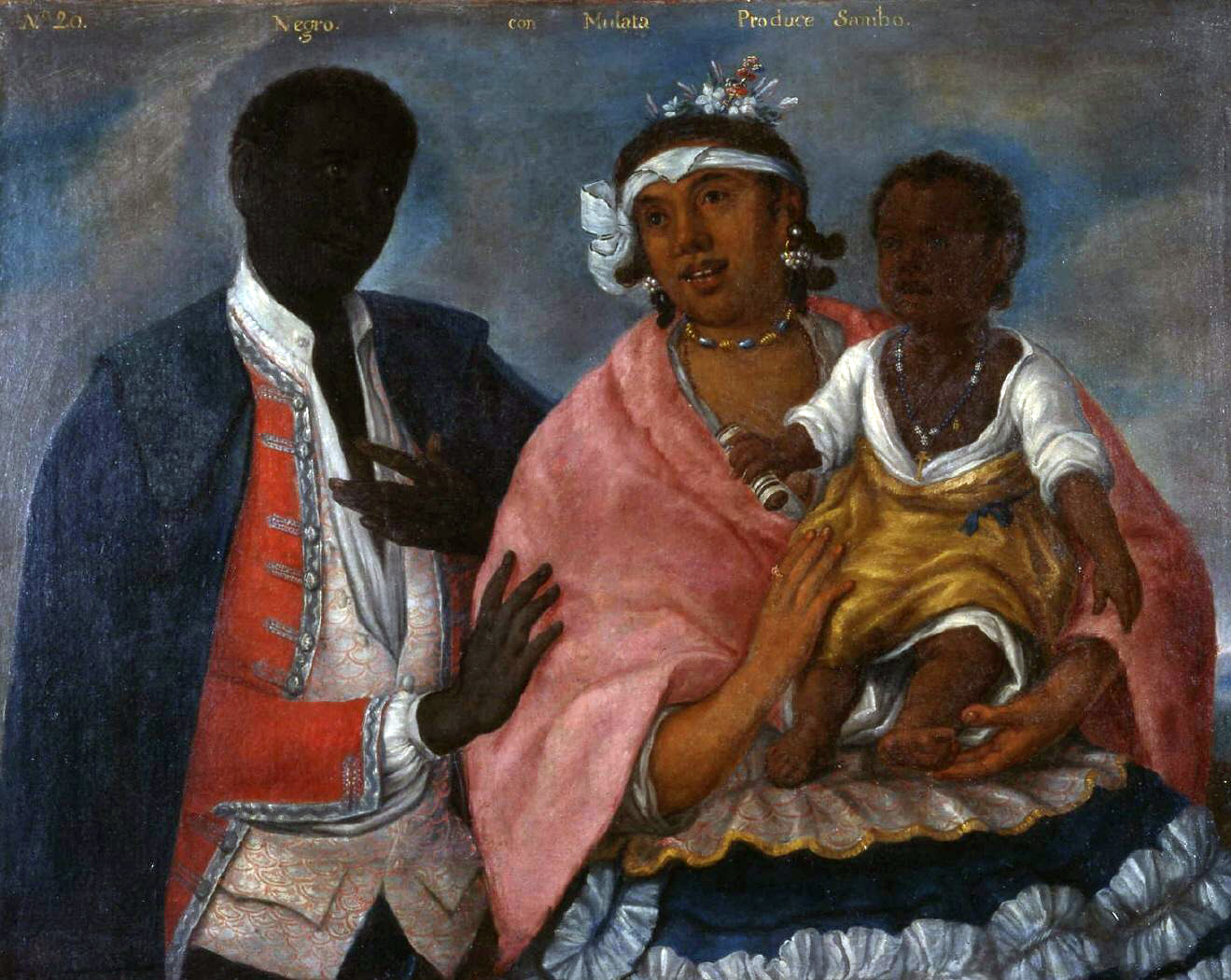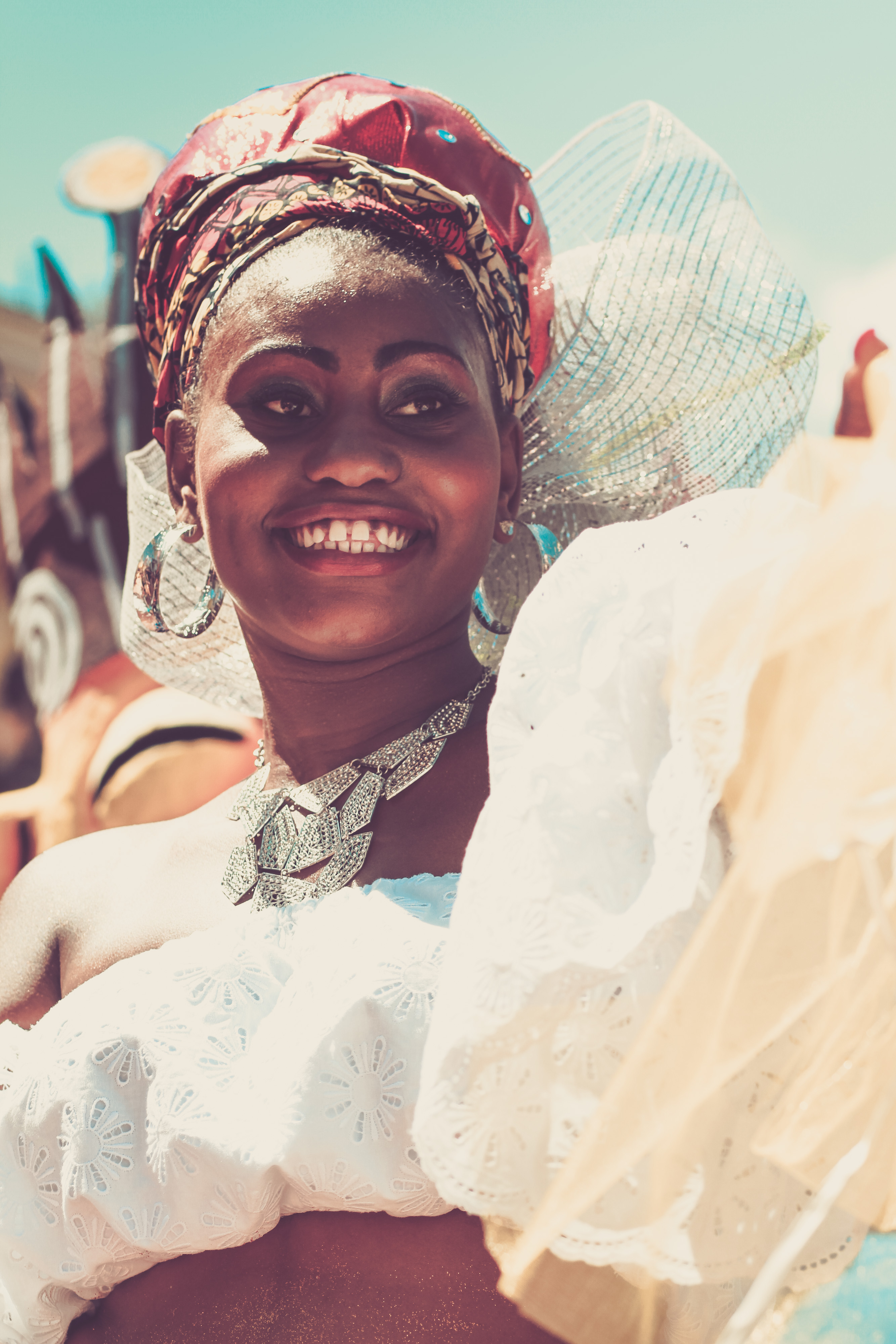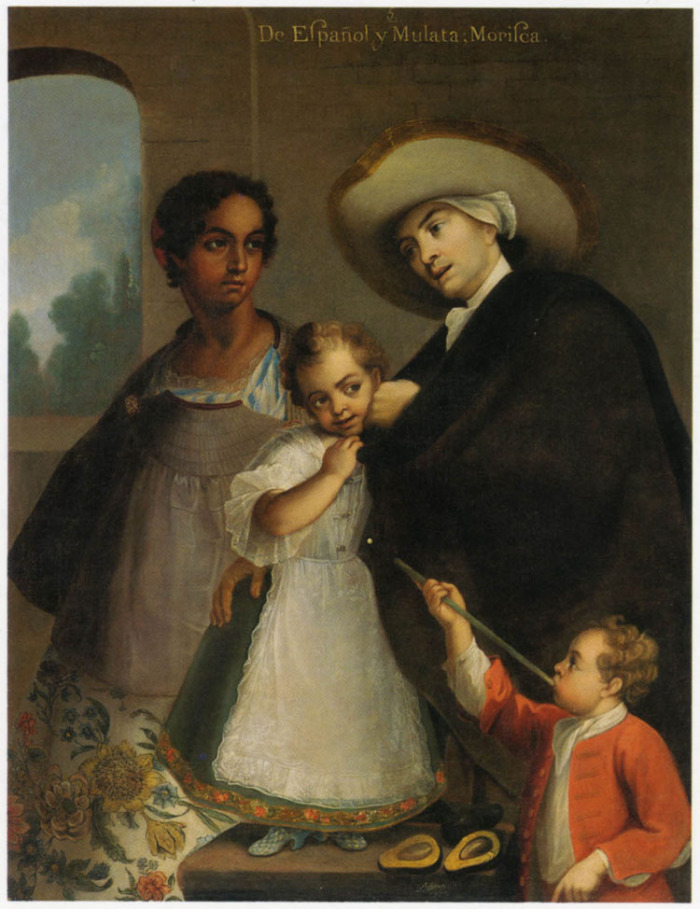|
Marabou (ethnicity)
Marabou (; ) is a term of Haitian origin denoting Haitians of Mixed race ancestry. The term comes originally from the African Marabouts. Marabous are mainly descended from intermingling between Africans, Europeans and indigenous Taino. The Marabou label dates to the colonial period of Haiti's history, meaning the offspring of a mulatto ( , ) is a Race (human categorization), racial classification that refers to people of mixed Sub-Saharan African, African and Ethnic groups in Europe, European ancestry only. When speaking or writing about a singular woman in English, the ... and a griffe person. However, Médéric-Louis-Elie Moreau de Saint-Méry, in his three volume work on the colony,Médéric-Louis-Elie Moreau de Saint-Méry. Description topographique, physique, civile, politique et historique de la partie francaise de lisle Saint-Domingue. 3 vols.(Philadelphia, 1797). describes Marabous as the product of the union of an African/European and a Taino. See also * ... [...More Info...] [...Related Items...] OR: [Wikipedia] [Google] [Baidu] |
Haiti
Haiti, officially the Republic of Haiti, is a country on the island of Hispaniola in the Caribbean Sea, east of Cuba and Jamaica, and south of the Bahamas. It occupies the western three-eighths of the island, which it shares with the Dominican Republic. Haiti is the third largest country in the Caribbean, and with an estimated population of 11.4 million, is the most populous Caribbean country. The capital and largest city is Port-au-Prince. Haiti was originally inhabited by the Taíno people. In 1492, Christopher Columbus established the first European settlement in the Americas, La Navidad, on its northeastern coast. The island was part of the Spanish Empire until 1697, when the western portion was Peace of Ryswick, ceded to France and became Saint-Domingue, dominated by sugarcane sugar plantations in the Caribbean, plantations worked by enslaved Africans. The 1791–1804 Haitian Revolution made Haiti the first sovereign state in the Caribbean, the second republic in the Americ ... [...More Info...] [...Related Items...] OR: [Wikipedia] [Google] [Baidu] |
Marabouts
In the Muslim world, the marabout () is a descendant of Muhammad (Arabic: سـيّد, romanized: ''sayyid'' and ''sidi'' in the Maghreb) and a Muslim religious leader and teacher who historically had the function of a chaplain serving as a part of an Islamic army, notably in North Africa and the Sahara region, in West Africa, and historically in the Maghreb. The marabout is often a scholar of the Quran, or religious teacher. Others may be wandering holy men who survive on alms or as spiritual directors of Muslim religious communities, often as '' muršid'' ("guide") of Sufi orders. The term "marabout" is also used for the mausolea of such religious leaders (cf. '' maqām'', '' mazār'', in Palestine also '' walī/velī''). West Africa Muslim religious teachers Muslim Sufi brotherhoods were one of the main organizing forms of Islam in precolonial West Africa, and with the spread of Sufism into the area, the marabout's role combined with local practices throughout Senegamb ... [...More Info...] [...Related Items...] OR: [Wikipedia] [Google] [Baidu] |
Arab Haitians
Levantine Haitians ( French: Levantine ''haïtiens''; Haitian Creole: ''Ayisyen levantin)'' are Haitians of full or partial Levantine ancestry, including Levant-born immigrants to Haiti. History The first Levantine immigrants to arrive in Haiti in the mid 19th century. During the time, Levantine business secnated by Italian immigrants. Many of Levantines migrated to the countryside where they peddled and were very informal economically speaking. World War I, which took place when Lebanon was part of the Germany-allied Ottoman Empire, triggered a Lebanese migration to the Americas, with Haiti receiving a large number of Lebanese immigrants. Haiti received a score of Palestinian refugees during the 1948 Nakba. The country was estimated to have about between 500,000 and 1 million residents of Levantine heritage. Social relations Levantine Haitians are commonly considered as part of the upper class within Haitian society, yet they maintain their own unique presence separate from ... [...More Info...] [...Related Items...] OR: [Wikipedia] [Google] [Baidu] |
Indo-African (other)
African-Indian, usually refers to people of multiracial people, mixed Indian and African heritage. *By demographic **Dougla people, Dougla, Caribbean people who are of mixed African and Indian descent **Chagossians, people of African, Malagasy and Indian ancestry who formerly lived in the Chagos Islands *Members of the Indian Diaspora (Overseas Indian), Indian diaspora living in Africa and citizens of India living in Africa: **Indian South Africans **Indian diaspora in Southeast Africa **Indians in Botswana **Indians in Madagascar **Indians in Kenya **Indians in Mozambique **Indians in Réunion and Malbars (Réunionnais of Tamil origin) **Indians in Tanzania **Indians in Uganda **Indians in Zambia **Indians in Zimbabwe **Mauritians of Indian origin **Indo-Seychellois *Members of the African diaspora living in India: **Siddis, a South Asian community of Bantu descent **Siddis of Karnataka, a Karnataka community of Bantu descent **Afro-Asians in South Asia, South Asian people of Africa ... [...More Info...] [...Related Items...] OR: [Wikipedia] [Google] [Baidu] |
Zambo
Zambo ( or ) or Sambu is a racial term historically used in the Spanish Empire to refer to people of mixed Amerindian, Indigenous Amerindian and West African people, African ancestry. Occasionally in the 21st century, the term is used in the Americas to refer to persons who are of mixed West African people, African and Indigenous peoples of the Americas, Native American ancestry. The equivalent term in Brazil is (). However, in Portugal and Portuguese-speaking Africa, ''cafuzo'' is used to refer to someone born of an African person and a person of mixed African and European ancestry. Background The word is believed to have originated from one of the Romance languages or Latin and its direct descendants. The feminine word is (not to be confused with the Argentina, Argentine Zamba (artform), Zamba folk dance.) In some parts of colonial Spanish America, the term applied to the children of one African and one Amerindian parent, or the children of two zambo parents. In New S ... [...More Info...] [...Related Items...] OR: [Wikipedia] [Google] [Baidu] |
Chinese Haitians
Chinese Haitians ( French: ''Sino-Haïtien''; ) are Haitians of Chinese ancestry who immigrated to or were born in Haiti. There are about 230 Chinese people living in Haiti as of 2010. The descendants that intermarried with other races are called Marabou. Overview Many Chinese people living in Haiti are businessmen in governmental or other businesses while there are other Chinese nationals working in Haitian companies as well. With last names like Wu, Wah, Fung, Fong-Ging, Fungcap, were the first known Chinese families arrived in Haiti in the late 1890s, fleeing crumbling dynasties, while continuous waves came into Haiti in the 1970s and 1980s with them mostly coming from Taiwan. There is only one Chinese restaurant in Haiti, the Wujiayuan Restaurant in Pétion-Ville, an upper-class neighborhood in Port-au-Prince. The restaurant was arranged as a shelter during the 2010 Haiti earthquake by China's foreign ministry. About 230 Chinese people were in Haiti at the time of the disa ... [...More Info...] [...Related Items...] OR: [Wikipedia] [Google] [Baidu] |
Indo-Haitians
Indo-Haitians () or Indian-Haitans are Haitians of Indian ancestry who immigrated to or were born in Haiti. As of 2011, there were about 10,000 people of East Indian ancestry or ancestry from the Indian subcontinent living in Haiti, with the overwhelming majority of them being mixed with people of African and European ancestry. Their descendants are known as Marabous. Overview The Indian community in Haiti consists mainly of professionals, businessmen, and volunteers from the congregation of the Sisters of Charity. The community is made up of immigrants from India as well as other Caribbean islands such as Martinique and Guadeloupe. Indo-Caribbean immigrants from other Caribbean islands have intermarried with other Haitian communities. Their descendants are known as Marabous. There is also an influx of Haitian children born to Afro-Haitian mothers and Sri Lankan Tamil fathers. 2010 Haiti earthquake During the 2010 Haiti earthquake, many members of the Indian community have lost ... [...More Info...] [...Related Items...] OR: [Wikipedia] [Google] [Baidu] |
White Haitians
White Haitians (, ; Haitian Creole: ''blan ayisyen''), are Haitians of predominant or full European descent. There were approximately 20,000 whites around the Haitian Revolution, mainly French, in Saint-Domingue. They were divided into two main groups: The Planters and Petit Blancs. The first Europeans to settle in Haiti were the Spanish. The Spanish enslaved the indigenous Haitians to work on sugar plantations and in gold mines. European diseases such as measles and smallpox killed all but a few thousand of the indigenous Haitians. Many other indigenous Haitians died from overwork and harsh treatment in the mines from slavery. Most Europeans who settled in Haiti were killed or fled during the Haitian Revolution. History European conquest and colonization The presence of whites in Haiti dates back to the founding of La Navidad, the first European settlement in the Americas by Christopher Columbus in 1492. It was built from the timbers of his wrecked ship Santa María, during his ... [...More Info...] [...Related Items...] OR: [Wikipedia] [Google] [Baidu] |
Afro-Haitians
Afro-Haitians or Black Haitians (; ) are Haitians of the African diaspora. They form the largest racial group in Haiti and together with other Afro-Caribbean groups, the largest racial group in the region. The majority of Afro-Haitians are descendants of enslaved Africans brought to the island by Spanish Empire, Spanish Empire and French colonial empires, French Colonial Empire to work on plantations. Since the Haitian Revolution, Afro-Haitians have been the largest racial group in the country, accounting for 95% of the population in the early 21st century. The remaining 5% of the population is made up of mixed persons (mixed African and European descent) and other minor groups (European, Arab, and Asian descent). Haitian nationality History The Island of Ayiti was inhabited by the Arawak Peoples: Taino, Ciguayo and the Ciboney, Siboney. Italian explorer Christopher Columbus sighted the Island on 6 December 1492. He named it La Isla Española ("The Spanish Island"), late ... [...More Info...] [...Related Items...] OR: [Wikipedia] [Google] [Baidu] |
Mulatto Haitians
Mulatto (, ) is a term in Haiti that is historically linked to Haitians who are born to one white parent and one black parent, or two mulatto parents. People of mulatto or white descent constitute a minority of 5 percent of the Haitian population. See also * Affranchi * Gens de couleur * Free people of color * Afro-Haitians * White Haitians * Marabou * Mulatto * Passing (racial identity) * Creole peoples Creole peoples may refer to various ethnic groups around the world. The term's meaning exhibits regional variations, often sparking debate. Creole peoples represent a diverse array of ethnicities, each possessing a distinct cultural identity tha ... References and footnotes {{Haitian people Ethnic groups in Haiti Mulatto Multiracial affairs in the Caribbean People from Saint-Domingue Person of color ... [...More Info...] [...Related Items...] OR: [Wikipedia] [Google] [Baidu] |
Enciclopedia Universal Ilustrada Europeo-americana
__NOTOC__ The ''Enciclopedia universal ilustrada europeo-americana'' (also called ''Enciclopedia Espasa'', or ''Enciclopedia Espasa-Calpe'', after its publisher, founded by José Espasa Anguera) is a Spanish encyclopedia. It comprises 72 volumes (numbered from 1 to 70, with parts 18 and 28 consisting of two volumes each) published from 1908 to 1930 plus a ten-volume appendix published 1930–33. Between 1935 and 2003, 33 supplemental volumes were published plus an index, another A–Z appendix, and an atlas, for a total of 118 volumes. Each of the volumes vary in length. As of 1986, it is the longest. The Chinese Great General Encyclopedia of Yung-lo ta tien (1403–8) conserves only 370 of its 22,937 chapters and the 15th edition Encyclopædia Britannica is listed as "the most ample current encyclopedia" with 43,000,000 words. printed encyclopedia with 105,000 pages and 165,200,000 words. ''Encyclopaedias: Their History Throughout The Ages'' regards the ''Espasa'' as one of t ... [...More Info...] [...Related Items...] OR: [Wikipedia] [Google] [Baidu] |
Quadroon
In the colonial societies of the Americas and Australia, a quadroon or quarteron (in the United Kingdom, the term quarter-caste is used) was a person with one-quarter African/ Aboriginal and three-quarters European ancestry. Similar classifications were octoroon for one-eighth black (Latin root ''octo-'', means "eight") and quintroon for one-sixteenth black. Governments of the time sometimes incorporated the terms in law, defining rights and restrictions. The use of such terminology is a characteristic of hypodescent, which is the practice within a society of assigning children of mixed unions to the ethnic group which the dominant group perceives as being subordinate. The racial designations refer specifically to the number of full-blooded African ancestors or equivalent, emphasizing the quantitative least, with quadroon signifying that a person has one-quarter black ancestry. Etymology The word ''quadroon'' was borrowed from the French ''quarteron'' and the Spanish ''cuarte ... [...More Info...] [...Related Items...] OR: [Wikipedia] [Google] [Baidu] |




